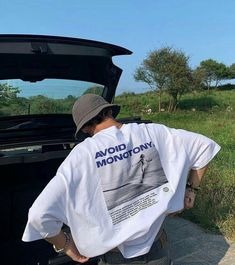The Ultimate Guide to T-Shirt: History, Styles, and Fashion Trends

T-shirts have become an essential part of everyone’s wardrobe, transcending age, gender, and fashion trends. Whether worn casually, as part of a uniform, or as a statement piece, T-shirts offer comfort, versatility, and a means of self-expression. This article explores the history, styles, materials, and current trends of T-shirts, giving you a deeper appreciation for this wardrobe staple.
A Brief History of T-Shirts
The T-shirt, as we know it today, originated from the 19th-century undergarments. Initially, it was a simple white cotton piece worn under shirts for added comfort. By the early 20th century, the U.S. Navy began issuing short-sleeved, crew-neck shirts as part of their uniforms. These shirts were practical, breathable, and easy to clean, making them a preferred choice for laborers and soldiers.
T-shirts gained mainstream popularity in the 1950s when Hollywood icons like Marlon Brando and James Dean sported them in films such as A Streetcar Named Desire and Rebel Without a Cause. Their rebellious and effortless style made T-shirts a fashion statement. Over the decades, T-shirts evolved from basic white undergarments to colorful, printed, and graphic designs that symbolize culture, politics, and personal expression.
Popular T-Shirt Styles
Today, T-shirts come in various styles to suit different preferences and occasions. Here are some of the most popular types:
1. Crew Neck T-Shirt
This is the classic T-shirt style with a round neckline. It is versatile and pairs well with jeans, shorts, and even blazers for a smart-casual look.
2. V-Neck T-Shirt
The V-neck design adds a touch of sophistication and is often preferred by those who want a more elongated neckline. It works well for layering under jackets or sweaters.
3. Polo T-Shirt
A polo T-shirt has a collar and a few buttons at the neckline, making it a slightly dressier option. It is popular in sports, business-casual settings, and leisurewear.
4. Henley T-Shirt
The Henley combines elements of both crew neck and polo shirts, featuring a buttoned placket without a collar. It gives off a rugged yet stylish appearance.
5. Long-Sleeve T-Shirt
For cooler weather or a more polished look, long-sleeve T-shirts provide extra coverage while maintaining comfort and style.
6. Graphic T-Shirt
Graphic tees allow wearers to express themselves through prints, slogans, or artistic designs. They are popular among music bands, brands, and pop culture enthusiasts.
7. Oversized T-Shirt
Oversized T-shirts offer a relaxed and trendy aesthetic. They are often styled with biker shorts, leggings, or distressed denim for a streetwear-inspired look.
Materials Used in T-Shirts
The fabric of a T-shirt affects its comfort, durability, and overall look. Here are the most commonly used materials:
1. Cotton
Cotton is the most widely used fabric due to its breathability, softness, and durability. Variations include:
- Organic Cotton: Grown without pesticides, making it eco-friendly.
- Pima and Supima Cotton: Known for their superior softness and longevity.
2. Polyester
Polyester T-shirts are lightweight, quick-drying, and resistant to wrinkles and shrinking. They are commonly used in athletic wear.
3. Cotton-Polyester Blends
Blended fabrics combine the best qualities of both cotton and polyester, offering durability, stretch, and comfort.
4. Tri-Blend (Cotton, Polyester, and Rayon)
Tri-blend T-shirts are ultra-soft and lightweight, making them a favorite for vintage-style shirts.
5. Bamboo Fabric
T-shirts made from bamboo fibers are eco-friendly, antibacterial, and moisture-wicking, making them an excellent choice for sustainable fashion lovers.
T-Shirt Fashion Trends
T-shirts have constantly evolved to match changing fashion trends. Here are some of the most popular trends in 2025:
1. Sustainable T-Shirts
With the rise of eco-conscious consumers, brands are producing T-shirts made from organic, recycled, and biodegradable fabrics.
2. Vintage-Inspired Tees
Retro designs, faded prints, and distressed textures are making a comeback, giving T-shirts a nostalgic feel.
3. Minimalist T-Shirts
Plain, neutral-colored tees with subtle logos or no prints at all are trending, offering a sleek and timeless aesthetic.
4. Oversized and Boxy Fits
Streetwear has influenced oversized T-shirts with drop shoulders and loose fits, creating a relaxed and trendy silhouette.
5. Statement Graphic Tees
Bold, artistic, and message-driven graphic tees continue to be a popular choice, allowing wearers to express their personalities and beliefs.
How to Style a T-Shirt
Casual Look
Pair a classic crew neck T-shirt with jeans and sneakers for an effortless everyday outfit.
Smart-Casual Look
Wear a fitted V-neck T-shirt under a blazer with chinos for a refined yet comfortable look.
Streetwear Look
An oversized T-shirt with cargo pants, sneakers, and accessories like a chain or cap creates a trendy, urban outfit.
Athleisure Look
Combine a moisture-wicking T-shirt with joggers and running shoes for a sporty yet stylish ensemble.
Layered Look
Layer a plain T-shirt under an open shirt or a lightweight jacket for a stylish, multi-dimensional outfit.
Summer Look
A relaxed-fit T-shirt with shorts, sandals, and sunglasses is the perfect combination for warm weather.
Conclusion
T-shirts have come a long way from being mere undergarments to becoming a global fashion statement. Their versatility, comfort, and ability to reflect personal style make them a timeless wardrobe essential. Whether you prefer classic crew necks, trendy oversized fits, or eco-friendly materials, there is a T-shirt for everyone. As fashion continues to evolve, T-shirts will undoubtedly remain at the forefront of casual and expressive wear. With so many styles, materials, and designs available, investing in high-quality T-shirts is a must for anyone looking to enhance their wardrobe.
